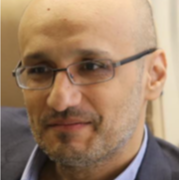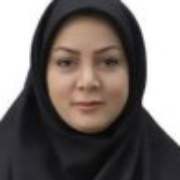1. Background
Medical knowledge is one of the six core competencies of ACGME (1). Although clinical education has been considered the main field of residency education, the improvement of knowledge is an important prerequisite for anesthesiology residents, leading to improved clinical performance (2-4). In addition, other aspects of adult learning should be considered to thrive as a competent clinical specialist (5-7). Small group learning can be a competent method for gaining these goals if the needs and feedbacks of the trainee are considered using a sophisticated and goal-directed approach (8).
2. Objectives
This study aimed to assess the attitudes of CA-1 to CA-3 anesthesiology residents toward level-specific small-group blended learning to improve their clinical training process.
3. Methods
In this cross-sectional attitude assessment descriptive-analytical study, 56 anesthesiology residents from the Department of Anesthesiology, Shahid Beheshti University of Medical Sciences (SBMU), Tehran, Iran participated throughout the 2nd academic semester (May-October 2019). After the study was approved by the IRB ethics committee, they took part in a level-specific small-group blended learning program and were requested to fill out an anonymous questionnaire afterward. The attitudes of CA-1 to CA-3 anesthesiology residents were assessed, while CA-4 residents were not involved in the training process and so their attitudes were not assessed. For designing the questionnaire, the following steps were done:
A few open questions were provided for four of the authors (AD, AT, NM and MRM) through the Delphi method.
A questionnaire was designed based on the responses to the previous step by some of the authors (AD, AT, PS, and ST), including an introductory text, eight closed questions and two open questions. The closed questions were rated using a 5-point Likert scale (strongly agree = 5; agree = 4; neutral = 3; disagree = 2; strongly disagree = 1).
The face validity of the questionnaire was assessed by a number of colleagues (AD, AT, PS, ST, NM, and MRM).
The final format of the questionnaire was distributed between the residents through a social media group.
The residents were asked to fill out the printed questionnaire and sent it back anonymously to the Anesthesiology Department, SBMU.
The translated form of the stems of the questionnaire closed questions (from Persian to English) are summarized in Table 1.
| Stem of the Question | Strongly Agree | Agree | Neutral | Disagree | Strongly Disagree | |
|---|---|---|---|---|---|---|
| Q1 | This program has made an important contribution to my theory training | |||||
| Q2 | This program has been an important part of my training in clinical skills of anesthesia | |||||
| Q3 | From an educational point of view, holding these classes, with the presence of peer assistants, creates a greater sense of solidarity | |||||
| Q4 | These classes were not of much educational value to me | |||||
| Q5 | Classes on Monday mornings have been very helpful in terms of time | |||||
| Q6 | It is hard for me to get to classes | |||||
| Q7 | Not being in the clinic because of attending classes has jeopardized my training | |||||
| Q8 | These classes play an important role in reducing my stress during my residency |
Translated from of the Stems of the Questionnaire Closed Questions (from Persian to English)
Meanwhile, the study course was designed based on a planned list of topics with respect to the most practical and level-related didactic course topics. Choosing the titles of the courses was based on the most practical issues that residents had in the operating room and perioperative medicine practice for managing patients. Trainers were asked to use cooperative learning methods for their courses, including using blended e-learning sessions for training theoretical contents.
The responses of the residents towards closed questions were presented cumulatively as mean ± standard deviation for each item, both in the level and for all the three levels. After the correction of negative questions to positive ones, Cronbach’s alpha was calculated to assess the reliability of the questionnaire.
Data of the questionnaires were collected and analyzed using SPSS software (version 18, IBM Corp, Chicago, IL, USA).
4. Results
All the residents (CA-1, CA-2, and CA-3) sent the questionnaire back (N = 56). The results of the study are shown in the following tables. Tables 2 and 3, indicate the mean and standard deviation (SD) of the total study population regarding the eight closed questions. Among eight closed questions, Q4, Q6, and Q7 were negative, while the rest of the questions were positive. All positive questions were answered above score three (i.e., neutral); however, Q1, Q2, Q3, and Q5 were above score four (i.e., at least agree or more).
| N | Minimum | Maximum | Mean | SD | |
|---|---|---|---|---|---|
| Q1 | 56 | 1 | 5 | 4.39 | 0.928 |
| Q2 | 56 | 1 | 5 | 4.20 | 1.034 |
| Q3 | 56 | 2 | 5 | 4.61 | 0.779 |
| Q4 | 56 | 1 | 5 | 1.57 | 0.871 |
| Q5 | 56 | 1 | 5 | 4.05 | 1.086 |
| Q6 | 56 | 1 | 5 | 2.14 | 1.212 |
| Q7 | 56 | 1 | 5 | 1.34 | 0.837 |
| Q8 | 56 | 1 | 5 | 3.80 | 1.119 |
Descriptive Statistics (Mean ± SD) of the Study Population for Eight Closed Questions
| Residency Year | Q1 | Q2 | Q3 | Q4 | Q5 | Q6 | Q7 | Q8 |
|---|---|---|---|---|---|---|---|---|
| CA-1; (N = 15) | ||||||||
| Mean | 4.53 | 3.93 | 4.40 | 1.53 | 3.73 | 2.33 | 1.27 | 3.80 |
| SD | 0.516 | 1.033 | 0.910 | 0.516 | 1.163 | 1.175 | .458 | 1.014 |
| CA-2; (N = 20) | ||||||||
| Mean | 4.85 | 4.85 | 4.90 | 1.05 | 4.55 | 1.50 | 1.00 | 4.35 |
| SD | 0.489 | 0.489 | 0.447 | 0.224 | 0.605 | 0.946 | 0.000 | 0.988 |
| CA-3; (N = 21) | ||||||||
| Mean | 3.86 | 3.76 | 4.48 | 2.10 | 3.81 | 2.62 | 1.71 | 3.29 |
| SD | 1.195 | 1.136 | 0.873 | 1.136 | 1.250 | 1.244 | 1.231 | 1.102 |
Mean and SD of Each Question Based on the Residency Year
The residents believed that this program made important contributions to their theory training (Q1) and clinical skills of anesthesia (Q2); meanwhile created a greater sense of solidarity (Q3). On the other hand, most of them did not believe that the classes “were not of much educational value” (Q4) which was support for Q1 and Q2.
Regarding time management, the majority of residents were in favor of Monday morning classes (Q5); one should remember that daily activity starts on Sunday in Iran, and Monday is the midweek day with early low volume of operating rooms). In addition, nearly the majority of the respondents did not believe that participating in the classes were hard for them. Moreover, in Q7, the majority of residents did not agree that “not being in the clinic because of attending classes has jeopardized my training”. These three questions (i.e., Q5, Q6, and Q7) demonstrated that attending the classes had been appropriately designed regarding the circumstances of the residents.
Finally, the majority of residents believed that “these classes played an important role in reducing their stress during residency” which could be a sign in favor of the role of this educational program in reducing resident stress load and alleviating resident burnout.
As mentioned, after the correction of negative questions to positive ones; Cronbach’s alpha was calculated to assess the reliability of the questionnaire. This analysis led to a Cronbach’s alpha = 0.885 (for eight questions), which denotes to an appropriate level of the questionnaire’s reliability.
5. Discussion
The results of this study demonstrated that anesthesiology residents (CA-1, CA-2, and CA-3) were in favor of a “level-specific small group blended learning program”, which was assessed by an attitude assessment blinded questionnaire with good questionnaire reliability.
The Association for Medical Education in Europe (AMEE) has a number of important guides for medical education. Based on the AMEE Guide No. 48, when using small group learning, the basis of effective learning is the cognitive and communication skills of both trainer and trainee (8), which can be considered the cornerstone of small group learning. The current study dealt with the cognitive and communication skills in Q1, Q2, Q3, and Q8; the residents agreed with these aspects. So, regarding cognitive and communication skills, our findings are in line with general principles of AMEE Guide No. 48.
On the other hand, small group learning is strongly dependent on the degree of attention to group dynamics (8, 9). The role of the trainee is a basic member of group dynamics (10-12). Here, Q3, Q5, and Q6 were the most relevant questions related to group dynamics with confirmatory results from the questionnaire. Besides, two main other aspects of small group learning, including “socio-emotional well-being of the group” and “processes of group interaction” have been considered among the main factors, affecting the process of small group learning, which have been quoted in Q3, Q5, and Q6. The results of our study confirmed that from the viewpoint of trainees (here, attitudes of anesthesiology residents), group dynamics, including the items, such as the ease to attend the classes and the appropriate timing of the program, could play an important practical role in improving the trend and outcome of the training process.
Residents’ burnout is the main dilemma in medical education (13-15). Managing a load of resident stress, especially by indirect practical stress modification approaches (including improvement in the training of residents) could be a meaningful method to alleviate resident burnout (14, 16, 17). Anesthesiology residents are among the vulnerable populations regarding work burnout (17-19). Our study was in concordance with previous ones that focus on practical methods in lessening resident burnout through improving the quality of education. It would be possible to assess the role of improvement in education as a “mindfulness-based resilience intervention” or as a method to decreases “depersonalization scores” in future studies (14, 20).
Conclusion: Overall, this study demonstrates that anesthesiology residents are in favor of small-group learning, especially considering their clinical setting and the degree of burnout they tolerate.



